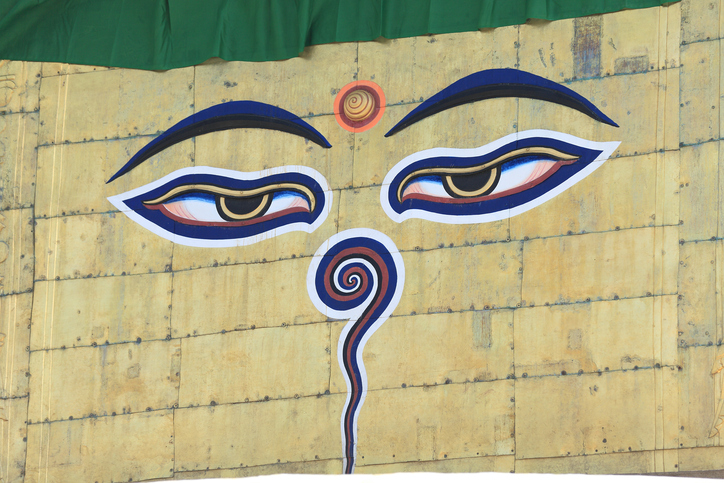By Mel Harkrader Pine
My religion, Unitarian Universalism, fits neatly into the theme of this blog, but does my spiritual practice, Buddhism? If you need a reminder, our theme is, “Helping liberal religion live up to its its promise.” Is Buddhism a liberal religion? It depends.
As with UUism, some see Buddhism as an approach to life, or a philosophy, but not a religion, liberal or otherwise. My answer to that is easy. Both UUism and Buddhism are what you want them to be. If you look at them as aides to life (Remember to meditate today. Make sure to recycle…and vote.) then that’s what they are.

But Buddhism and UUism become religions when you turn to them for help with the big questions about the intangibles in life: Why am I here? What’s my purpose? How can I lead a fulfilling life and suffer less? How can I grow my soul? What can I do for others? What becomes of me when I die?
Now, what’s a liberal religion? For me, that has nothing to do with external politics but rather how the faith teaches. If its teachers stress My Way or the Highway, that’s not a liberal faith. Religions that allow for, even encourage, personal reflection, questioning, and openness are liberal faiths. I worry that UUism and some other liberal churches are becoming narrower and more rigid, and I find my Buddhism is a refuge.
That doesn’t mean I’m calling Buddhism a liberal religion. That would be like calling Christianity or Judaism a liberal religion. Variations in each reach across the spectrum. Some schools of Buddhism are narrow and formulaic. But, as have other faiths, Buddhism changed to meet the needs of each new culture — from the Indian subcontinent east to Burma, Thailand and Cambodia, and then north to Tibet, and finally China, Korea and Japan.
That wasn’t really final, though. Buddhism is today becoming a significant, evolving Western religion, with more than a million followers in the United States. By just about any measure, there are far more Buddhists in the U.S. than Unitarian Universalists. And, as with UUism, Western Buddhism is struggling to define itself. When I asked my friend Ananda (Peace Paul), a Pure Land Buddhist minister in Hawaii, what he thought Western Buddhism would look like, he advised me to wait a century or two for the answer.
But we Buddhists sure do argue about it — with equanimity and non-attachment, of course. Or maybe not all the time. My own Buddhist path is Dzogchen, as taught by Lama Surya Das. Part of my attraction to Dzogchen is its nonsectarian nature, incorporating teachings from almost any Buddhist school, as well as from Christianity and other religions. Our roots are in Tibet, but we chant and pray in English and Pali as well Tibetan.
All this has been a long introduction to the article below from today’s New York Times. In it, Robert Wright, author of Why Buddhism Is True, while responding to criticism of his book, explains much of what I find comforting in Buddhism. And how my Buddhism helps me retain equanimity and non-attachment in the face of what, for me, is a looming potential desecration of Unitarian Universalist principles.
Copyright 2017 © Mel Harkrader Pine



Reblogged this on Melting-Pot Dharma and commented:
This started out at my other blog, but it sure fits here as well.
LikeLike